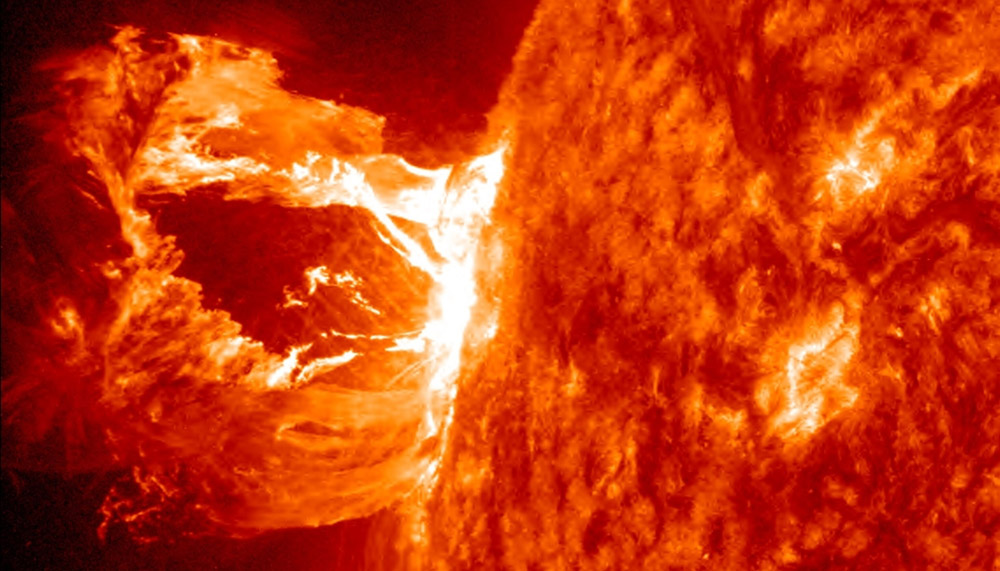 A massive coronal mass ejection (CME) can cause serious damage to eletronics and cripple our civilisation for decades. Photo: NASA
A massive coronal mass ejection (CME) can cause serious damage to eletronics and cripple our civilisation for decades. Photo: NASA
Very unusual solar eruption: Extremely strong CME ejected from the far side of the sun
A massive coronal mass ejection (CME) on the far side of the sun on March 13th had a speed of over 3,000 kilometers per second and was so powerful that it was classified as extremely rare (ER), something that only happens once or twice over several decades. It was ejected from the far side of the sun and therefore does not hit Earth, but was so extreme that radio traffic was nevertheless knocked out on Earth for several days. The sun is in an active phase during a low-activity solar cycle, a very dangerous combination for Earth, which has a severely weakened shield. We were reminded of this on March 15th after a weak CME once again created an unexpected geomagnetic storm with spectacular auroras.
Published: April 4, 2023, 5:52 pm
On March 13th, the SOHO coronagraph, a solar telescope, registered an extreme coronal mass ejection or CME in English. The plasma cloud was ejected from the sun at a speed of over 10 million kilometers per hour, which is an unusually high speed – an extreme CME that occurs maybe once or twice over a few decades. The normal speed for an ejected plasma cloud/CME is otherwise around 2 million kilometers per hour.
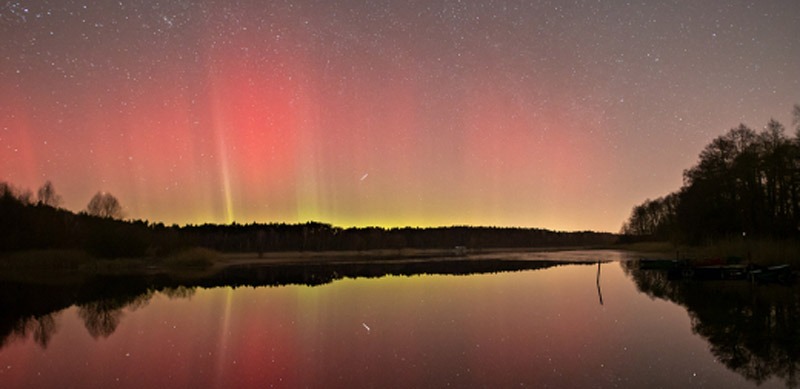
AURORA from the weak CME that was shot towards Earth on February 11th would never have created a geomagnetic storm rated G2 or even seen as spectacular and far from the poles as it did now, if not for the Earth’s magnetic field being severely weakened. Here, the northern lights are visible on March 15th in Bydgoszcz, Poland. Photo: Roman Banas
The American space agency NASA’s simulations show that the CME was so strong that it created a shockwave in all directions. As Earth was in the exact opposite direction this time, the impact was weak but sufficient to knock out radio traffic on and around both the North and South poles. Although the plasma cloud was ejected from the far side of the sun, away from Earth, the GOES-16 satellite from the U.S. government’s scientific organization, the National Oceanic and Atmospheric Administration (NOAA) found that some of the particles still reached Earth. This further demonstrates how extreme the CME was, and we can conclude that it would have led to catastrophic consequences if it had been directed towards Earth.
Several days after the solar eruption on March 13th, radio traffic on and around the poles continued to be affected. This is because our planet’s magnetic field consists of power lines that run from the magnetic North Pole to the magnetic South Pole. The magnetic field extends tens of thousands of kilometers into space and forms the magnetosphere there. As a result, particles are “diverted” towards the poles, which are more weakly protected, which is why we see auroras in these areas. Warnings were issued, and for three days, shortwave radio in the area was mostly completely knocked out, severely affecting air traffic in the area.
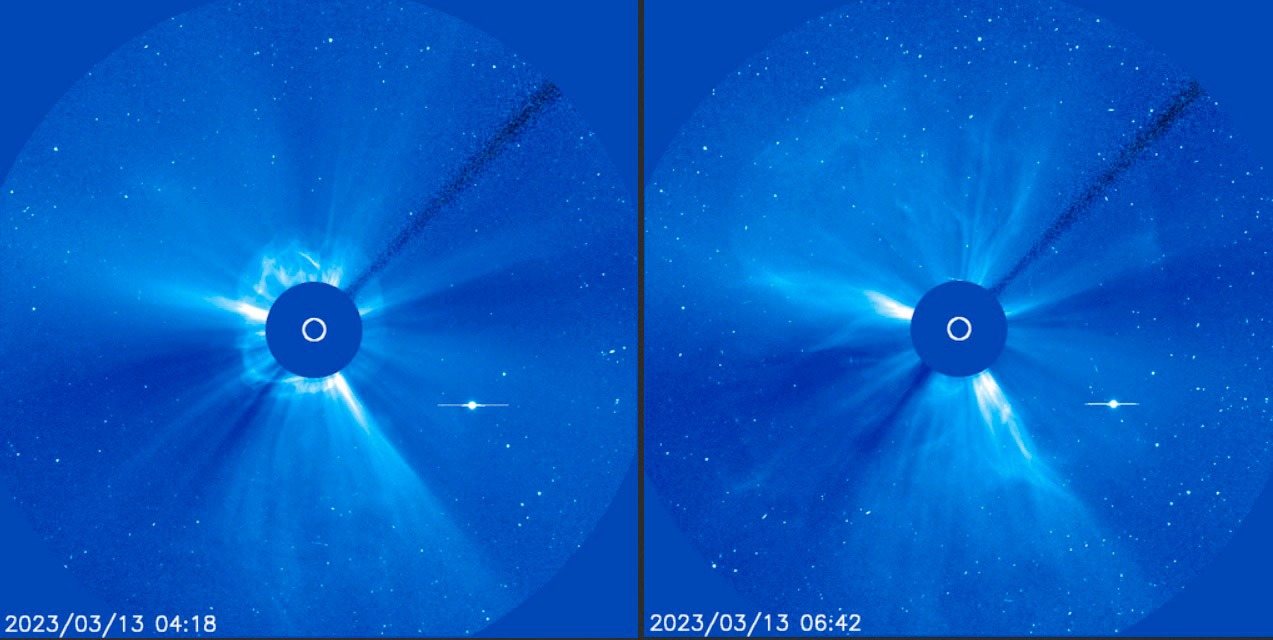
The LASCO CORONAGRAPH is a solar telescope designed to block light coming from the sun to see the, in relation to the sun, extremely weak light emission from the region closest to the sun. It is called the corona and is the sun’s outer atmosphere, which extends far beyond the luminous surface. The corona is very sparse and thin but several million degrees hot. LASCO is one of several instruments onboard the Solar and Heliospheric Observatory (SOHO), an international collaboration between ESA and NASA. Here, the CME is visible shortly after the solar eruption (left) and how the solar halo has spread 144 minutes later (right). Still images: Large Angle and Spectrometric Coronagraph, LASCO
Once again, an unexpected geomagnetic storm
On March 11th, a very weak CME occurred on the sun, which this time was directed towards us. It was so weak that it normally should not have affected Earth at all, but to many people’s surprise, it still caused a geomagnetic storm when it hit Earth on March 15th. Initially classified as a minor G1, it was later upgraded to a moderate G2. This is considerably more alarming than the extreme CME on the sun’s far side two days earlier, as it reminds us of Earth’s increasingly weakened magnetic field… a weakening that researchers in 2010 realized had accelerated at least tenfold in recent decades.
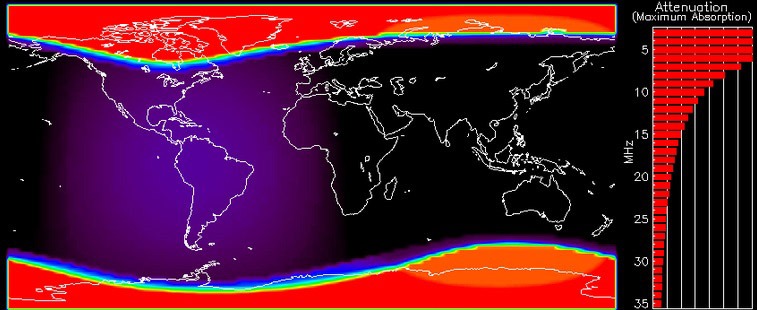
RADIO TRAFFIC DISRUPTED FOR THREE DAYS. The map shows how much radio waves between 3 and 35 MHz were disturbed on March 14th from the extreme CME on the sun’s far side the day before. Shortwave radio (3-30MHz) will not work within the red area due to the ionizing effect of incoming protons. The ionosphere is electrically conductive and therefore reflects radio waves by refraction (refraction) in the ionosphere’s different layers. This normally enables radio communication in these frequency bands, especially shortwave, over long distances. Map: NOAA/SWPC
As a consequence, New Zealand once again experienced celestial displays in the form of southern lights, and in Europe and North America, as far south as the USA, people experienced northern lights. That they could be seen simultaneously on March 15th in both hemispheres is due to the time of year. It was just six days before the March equinox, known as the vernal equinox in the Northern Hemisphere and the autumnal equinox in the Southern Hemisphere, which this year falls on March 20th. Almost equal darkness allows sky watchers in both hemispheres equal opportunities to witness auroras, which are caused by particles from the sun hitting Earth’s upper atmosphere, causing oxygen to glow red and green, and nitrogen to shine purple. A beautiful spectacle at the same time as it is an extremely ominous omen for those who understand that auroras for the second time in such a short period would not have been so spectacular and visible so far from the poles if it were not for Earth’s weakened magnetic field – a disaster-inviting process that is also accelerating.
All rights reserved. You have permission to quote freely from the articles provided that the source (www.freewestmedia.com) is given. Photos may not be used without our consent.
Consider donating to support our work
Help us to produce more articles like this. FreeWestMedia is depending on donations from our readers to keep going. With your help, we expose the mainstream fake news agenda.
Keep your language polite. Readers from many different countries visit and contribute to Free West Media and we must therefore obey the rules in, for example, Germany. Illegal content will be deleted.
If you have been approved to post comments without preview from FWM, you are responsible for violations of any law. This means that FWM may be forced to cooperate with authorities in a possible crime investigation.
If your comments are subject to preview by FWM, please be patient. We continually review comments but depending on the time of day it can take up to several hours before your comment is reviewed.
We reserve the right to delete comments that are offensive, contain slander or foul language, or are irrelevant to the discussion.

Bill Gates’ New Plan: Cut Down 70 Million Acres of Trees to “Combat Global Warming”
To be buried to prevent carbon emissions.It sounds like a bad joke, but the project has already been launched in US national parks. Millions of trees are to be felled "for the sake of the climate." The project is called the Carbon Lockdown Project and involves logging robots cutting down trees and dragging them to large pits where they are buried under oxygen-free conditions. "One ton of biomass in the soil is one ton of carbon dioxide not in the atmosphere," says Ning Zeng, the founder of the project. Bill Gates sponsors such a "climate company" called Kodama Systems, which has set itself the goal of burying one billion tons of biomass.

Solar researchers sound the alarm to deaf ears: “Severe cold and food shortages as early as the 2030s”
THE SUN IS CHANGING.Valentina Zharkova, a solar researcher and professor of mathematics and physics, already warned in 2019 about the Grand Solar Minimum, which she believes will affect the Earth between the years 2020 and 2053. According to her, researchers have observed clear signs of this since at least 2015.
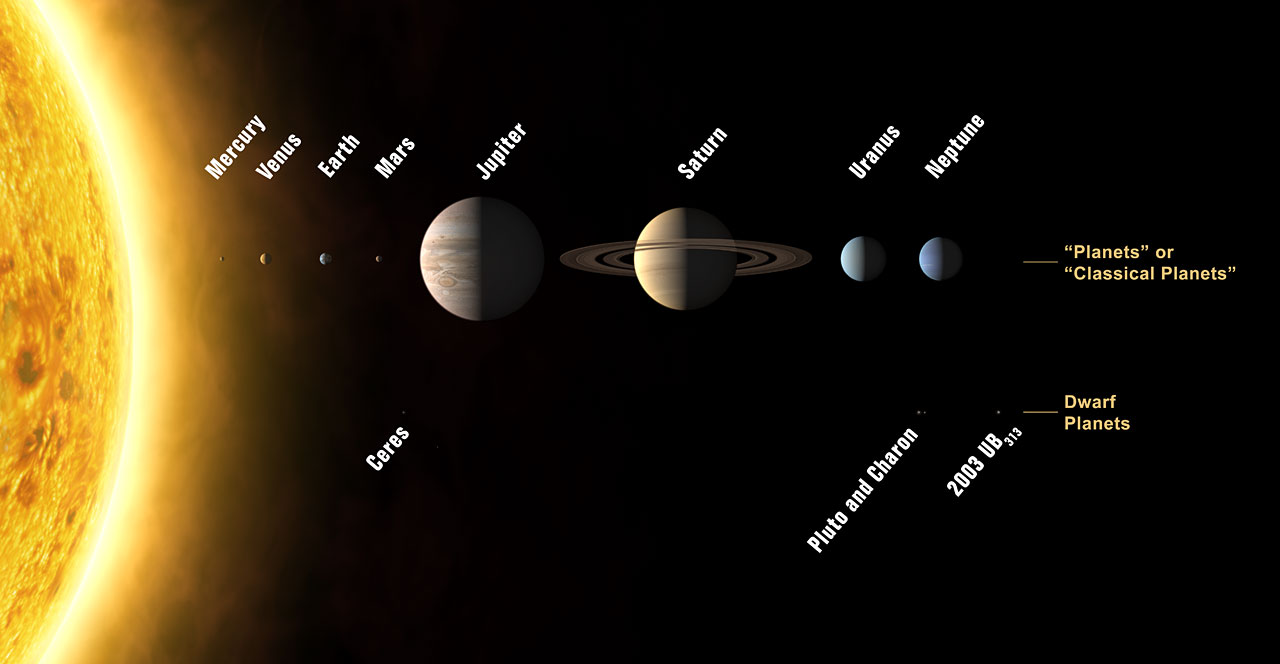
The Entire Solar System is Changing
CLIMATE CHANGEThe Sun has changed its activity dramatically during recent years. This is particularly evident on the outer planets of the solar system, and Free West Media presents a unique compilation of the drastic changes that some planets are currently undergoing and that are likely awaiting Earth as well.
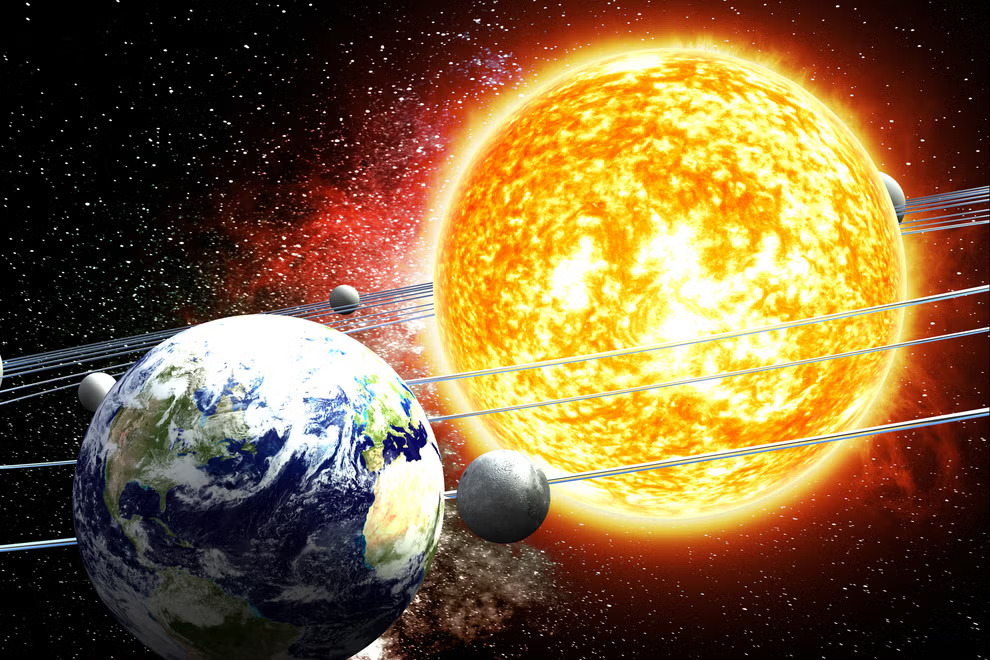
The Sun Drives Earth’s Climate, Not Carbon Dioxide
Top Researchers Push Back Against Climate Lies."The correlation is as clear as day," explained the Israeli astrophysicist Nir Shaviv, who was hailed by the establishment, before his interview with Forbes was hastily deleted. What he says contradicts the climate narrative, which points to humans as responsible for Earth's climate. Shaviv firmly asserts that it is the sun that controls the climate, something that can be scientifically proven in many ways. Contrary to the popular belief, the sun's influence on Earth has, in recent years, caused unusually cold and rainy weather, a trend that solar researchers warn will worsen significantly in the coming decades. The sun has exhibited an unusually low activity since 2016, during Solar Cycle 24, which was the weakest in a century.

Climate Maps Manipulated to Mislead the Public
The US state science organization NOAA released in May very revealing climate maps that show the average temperature across the world in April compared to the climate normal. Not only do they markedly deviate from countless countries' official temperature data for April, showing the spring month was cooler than normal, but they also contradict each other even though they originate from exactly the same measurement data. The New Times here reveal how the figures are distorted and that there are two parallel maps, one for scientists and one grossly deceptive one shown to the public.

Switzerland destroys its weapons instead of giving them to Ukraine
Despite growing international pressure, Switzerland is instead destroying older air defense systems that it has decommissioned. The country claims that sending weapons to a warring party would violate its historical neutrality policy.

The Loch Ness monster might have left the Scottish Highlands
The Loch Ness Monster has been spotted off the coast of England, according to “several people” in the British town of Clevedon who have taken new pictures of the mythical sea monster.

Volcanic eruption in Tonga will contribute to global cooling
When the underwater volcano in the island nation of Tonga in the South Sea had its explosion-like eruption on January 15, 2022, a massive pressure wave, more powerful than the largest atomic bomb, spread through both the Earth's oceans and atmosphere. The catastrophic event created a record-high ash and gas cloud that continues to spread over the earth.
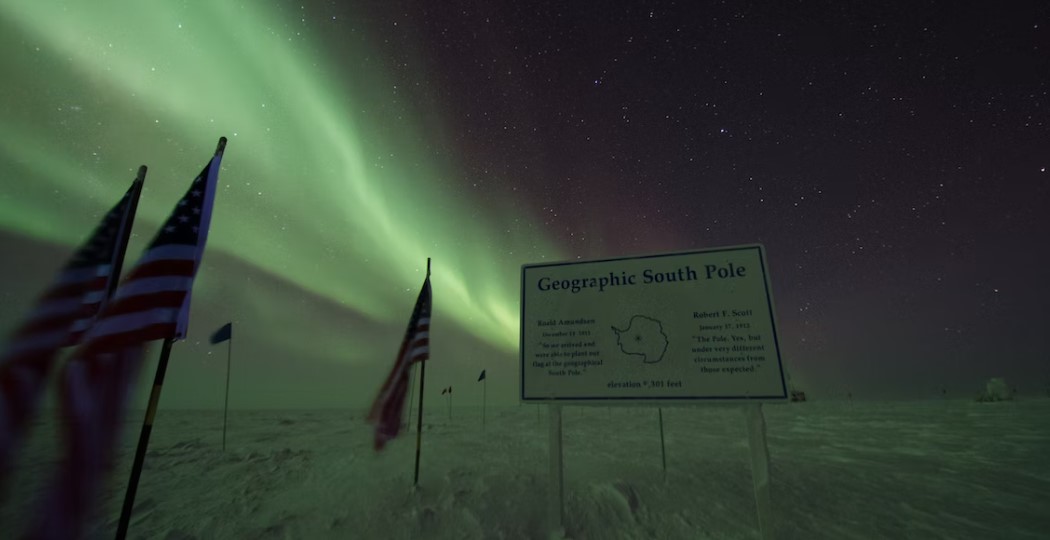
At the South Pole one cold weather record after another is being pulverised
The HagueWhile hundreds of private jets flew to the UN climate summit in Egypt not long ago, several cold records were smashed at the South Pole. On 16, 17 and 18 November, records were broken or equalled. On 18 November, the mercury dropped to -45,2 degrees Celsius. The previous cold record dates back to 1987. Then it reached -44,7 degrees on the same day.




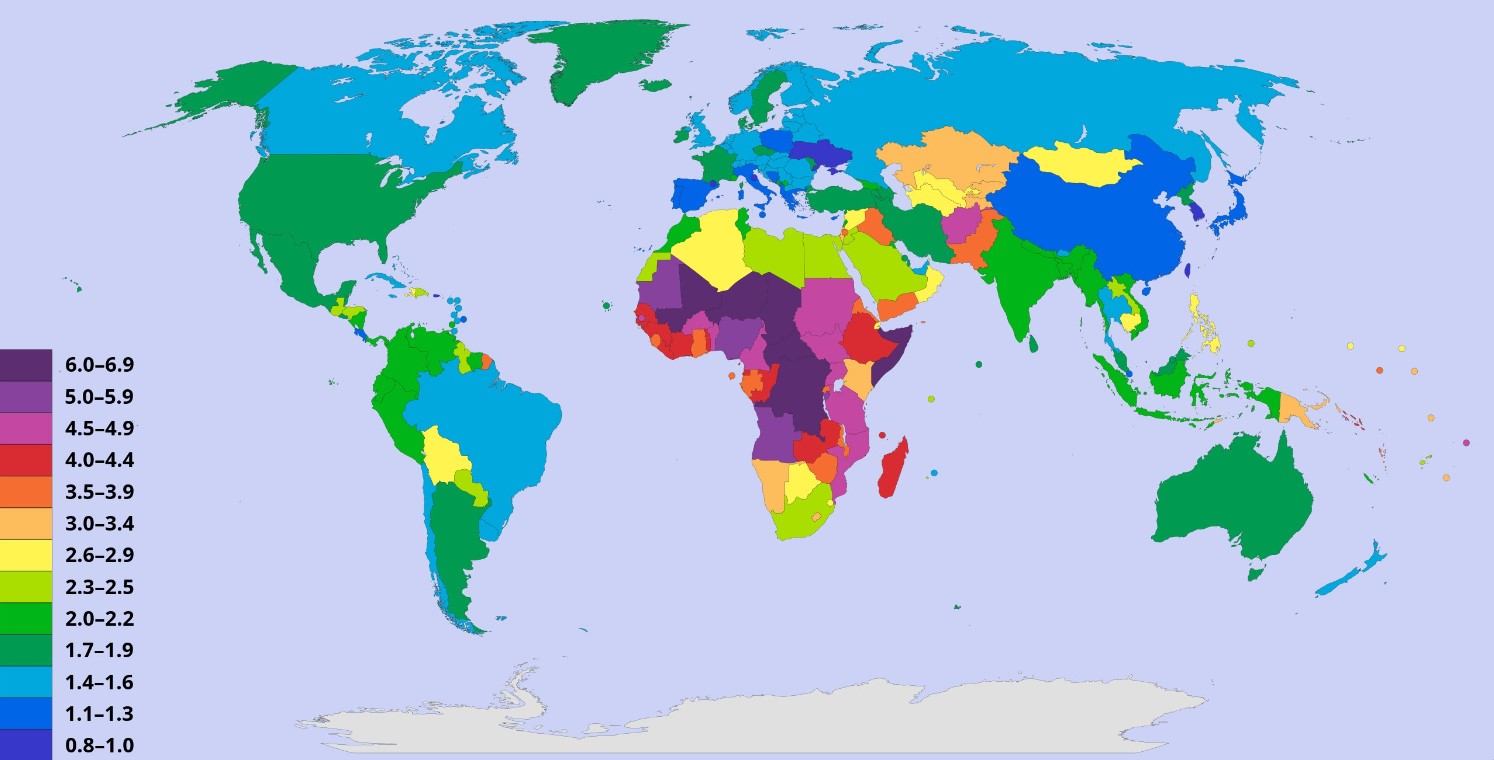
No comments.
By submitting a comment you grant Free West Media a perpetual license to reproduce your words and name/web site in attribution. Inappropriate and irrelevant comments will be removed at an admin’s discretion. Your email is used for verification purposes only, it will never be shared.